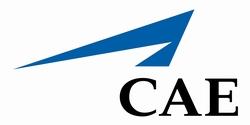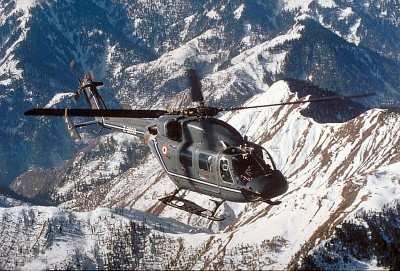Thu, Feb 03, 2011
CAE And Hal Helicopter Training Center Takes Delivery Of Dhruv
Simulator Cockpit
 The Helicopter Academy to Train by
Simulation of Flying (HATSOFF), a joint venture owned equally by
Hindustan Aeronautics Limited (HAL) and CAE, today announced that
its simulator cockpit for the civil/conventional variant of the
Dhruv has arrived at the HATSOFF training center in Bangalore
following design and manufacture at CAE's facility in Montreal,
Canada.
The Helicopter Academy to Train by
Simulation of Flying (HATSOFF), a joint venture owned equally by
Hindustan Aeronautics Limited (HAL) and CAE, today announced that
its simulator cockpit for the civil/conventional variant of the
Dhruv has arrived at the HATSOFF training center in Bangalore
following design and manufacture at CAE's facility in Montreal,
Canada.
The Dhruv simulator cockpit will now be installed and integrated
with the CAE-built full-mission simulator currently in operation at
HATSOFF. The simulator features CAE's revolutionary
roll-on/roll-off cockpit design, which enables cockpits
representing various helicopter types to be used in the simulator.
The cockpit for the civil/conventional variant of the Dhruv is the
second for the HATSOFF training center, and will be
ready-for-training in May 2011. The first cockpit for the simulator
represents the Bell 412 helicopter. Training for Bell 412 operators
commenced in July 2010.
"This is the world's first simulator representing the
indigenously developed HAL Dhruv helicopter and we are excited to
begin offering simulation-based training that will undoubtedly
prove to be a safe and cost-effective method for training Dhruv
helicopter aircrews," said Wg Cdr (Retd) Chandta Datt Upadhyay
Vr.C., Chief Executive Officer of HATSOFF.
The CAE-built full-mission helicopter simulator at HATSOFF and
the Bell 412 cockpit were certified during 2010 to Level D, the
highest qualification for flight simulators, by India's Directorate
General Civil Aviation (DGCA) and the European Aviation Safety
Agency (EASA). HATSOFF expects the cockpit for the
civil/conventional variant of the Dhruv to be certified to Level D
by the DGCA this spring. Additional cockpits for the Indian
Army/Air Force variant of the HAL-built Dhruv and the Eurocopter
Dauphin will be added to the HATSOFF training center over the next
year.

HAL Dhruv Helicopter
The HATSOFF training center, located near HAL's headquarters in
Bangalore, also features multimedia classrooms, computer-based
training, brief/debrief facilities, and a training management
information system. The full-mission simulator features a common
motion system, vibration platform, and visual display system, along
with the four separate cockpit modules that can be used in the
full-mission simulator. When a cockpit is not used in the
full-mission simulator, it will be used as a fixed-based flight
training device (FTD).
More News
From 2023 (YouTube Edition): New Propulsion Scheme Optimized for AAM Applications Founded in 2017 by Eric Bartsch, Pat Anderson, and Erik Lindbergh (grandson of famed aviation pion>[...]
During The Initial Climb, The Engine Began To Operate Abnormally And, After About Three Seconds, Experienced A Total Loss Of Power On October 29, 2025, about 1820 Pacific daylight >[...]
Aero Linx: Women in Aviation International Women in Aviation International is the largest nonprofit organization that envisions a world where the sky is open to all, and where avia>[...]
“We’ve paid for the cable line’s repair for the customer and have apologized for the inconvenience this caused them...” Source: Some followup info from an A>[...]
“We have long warned about the devastating effects of pairing optimization. Multiple times over many months, we highlighted how schedule manipulation, unbalanced schedules, a>[...]
 Classic Aero-TV: VerdeGo Debuts VH-3 Hybrid-Electric Powerplant
Classic Aero-TV: VerdeGo Debuts VH-3 Hybrid-Electric Powerplant NTSB Prelim: Grumman American Avn. Corp. AA-5B
NTSB Prelim: Grumman American Avn. Corp. AA-5B ANN's Daily Aero-Linx (12.02.25)
ANN's Daily Aero-Linx (12.02.25) Aero-News: Quote of the Day (12.02.25)
Aero-News: Quote of the Day (12.02.25) Aero-News: Quote of the Day (12.03.25)
Aero-News: Quote of the Day (12.03.25)




